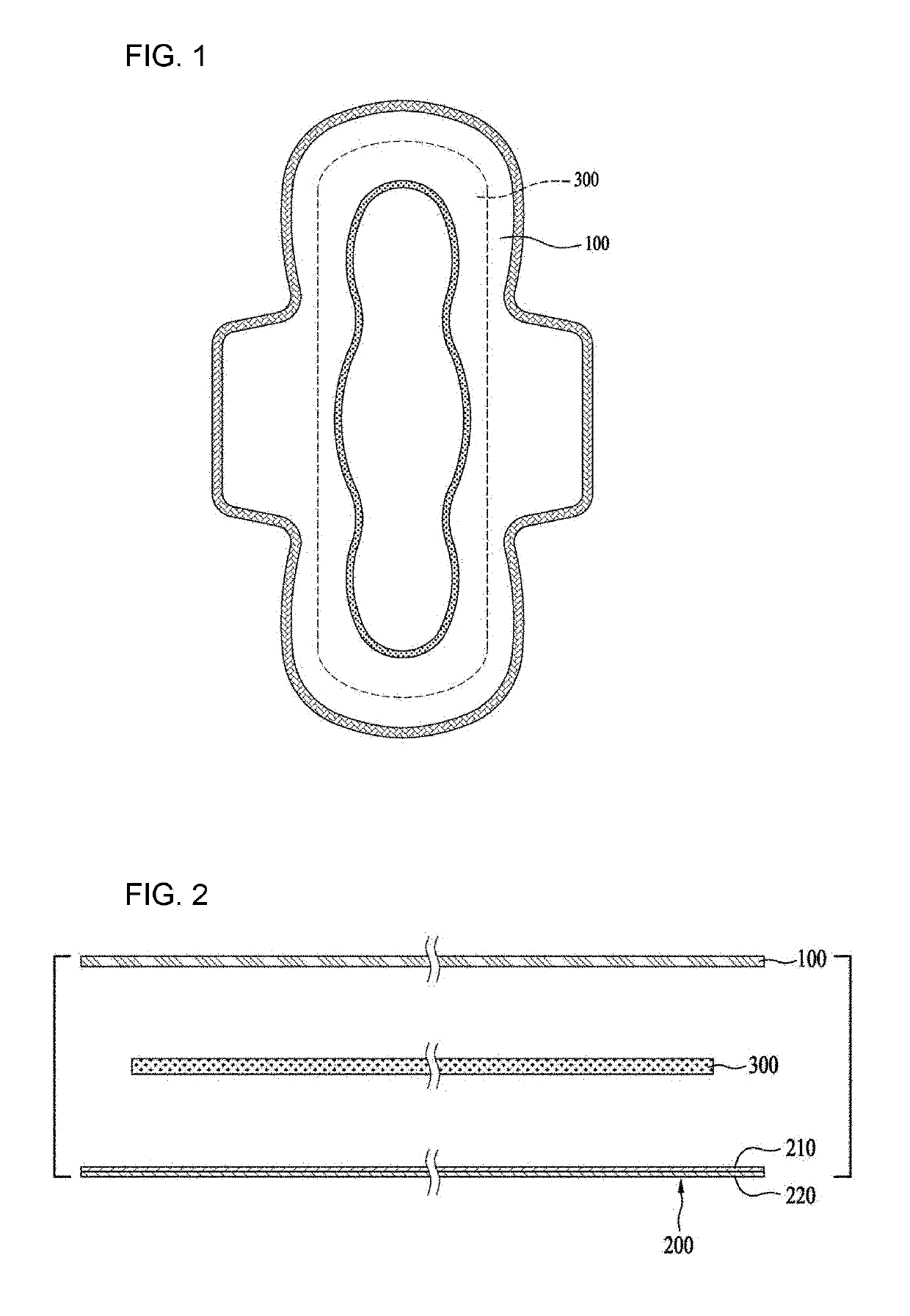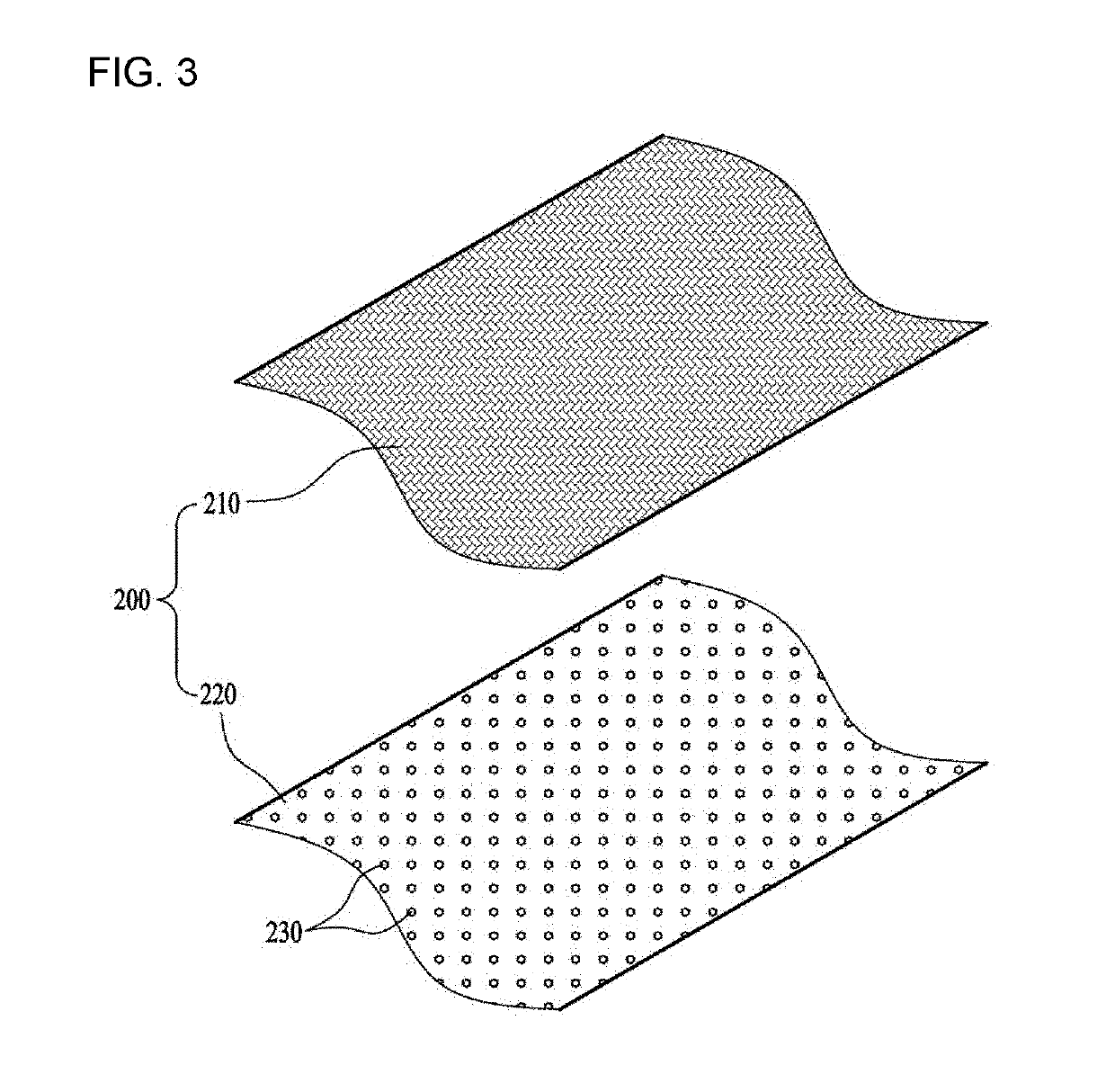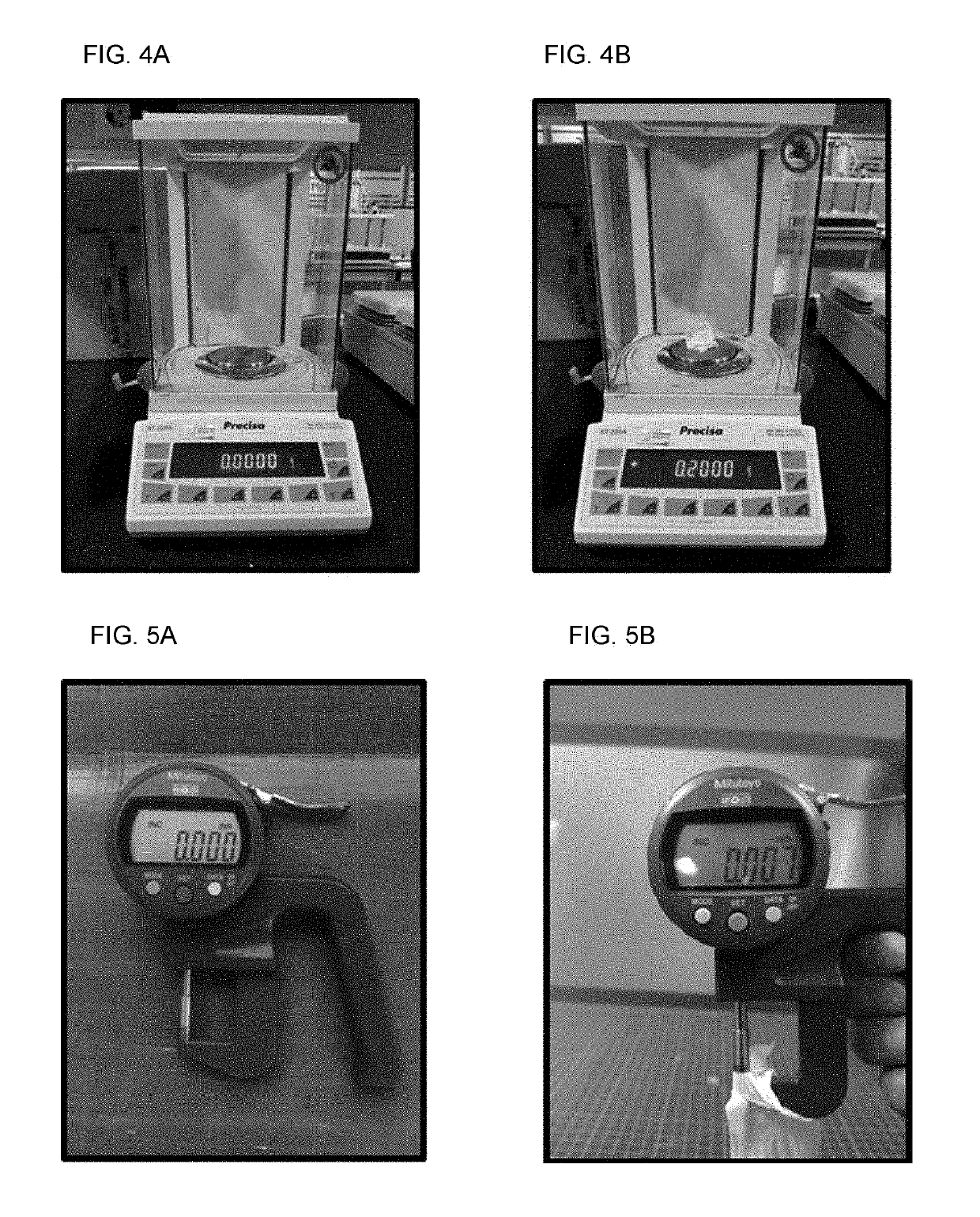Sanitary pad for women
a sanitary napkin and sanitary technology, applied in the field of sanitary napkins for women, can solve the problems of inability to solve the problems of air permeability, inconvenient cleaning, and inability to clean up, so as to prevent the growth of bacteria, ensure air permeability, and maintain waterproofness.
- Summary
- Abstract
- Description
- Claims
- Application Information
AI Technical Summary
Benefits of technology
Problems solved by technology
Method used
Image
Examples
preparation example
1. Formation of Nanomembrane 210
[0041]A nanomembrane is manufactured by electrospinning an electrospinning solution comprising a dissolved polymer (a solution obtained by dissolving a polymer in a solvent at a weight ratio of 1:1) at room temperature at a flow rate of 0.02 to 0.05 ml / min using an electrospinning device under the conditions that a spinning part and a stacking part are spaced apart from each other at a distance of 10 to 30 cm and that the applied voltage is adjusted in the range of 10 to 55 kV.
[0042]The polymer for use in the preparation of nanofiber is selected from the group consisting of polyurethane (PU), polyacrylonitrile (PAN), polyvinylalcohol (PVA), nylon, polyvinylidene fluoride (PVdF), polyhydroxybutyrate (PHB), polyethersulfone (PES), polyetherimide (PEI), polycaprolactone (PCL), polylactic acid (PLA), poly-L-lactic acid (PLLA), and combinations thereof.
[0043]Also, the solvent for dissolving the above polymer in order to perform electrospinning is selected ...
experimental example
[0068]The outer sheet 200 of a sanitary napkin for women according to the present embodiment was manufactured as described in the above Preparation Example, and the unit weight, thickness, air permeability and waterproofness thereof were measured under the following experimental conditions. As the Comparative Example, the outer sheets of commercially available sanitary napkins for women were tested under the same experimental conditions.
1. Weight of Nanomembrane
[0069]The weight of the outer sheet 200 of a sanitary napkin for women is the main factor that determines the fit with a wearer. The lighter the outer sheet, the better the fit.
[0070]A test sample was manufactured in a rectangular shape having a width of 250 mm and a length of 200 mm, and the weight thereof was measured in accordance with ASTM D 3886, and is represented in units of g / m2.
[0071]FIG. 4A shows photographs of the measuring device of the unit weight and FIG. 4B shows photographs captured during the measurement of t...
PUM
| Property | Measurement | Unit |
|---|---|---|
| thickness | aaaaa | aaaaa |
| thickness | aaaaa | aaaaa |
| flow rate | aaaaa | aaaaa |
Abstract
Description
Claims
Application Information
 Login to View More
Login to View More - R&D
- Intellectual Property
- Life Sciences
- Materials
- Tech Scout
- Unparalleled Data Quality
- Higher Quality Content
- 60% Fewer Hallucinations
Browse by: Latest US Patents, China's latest patents, Technical Efficacy Thesaurus, Application Domain, Technology Topic, Popular Technical Reports.
© 2025 PatSnap. All rights reserved.Legal|Privacy policy|Modern Slavery Act Transparency Statement|Sitemap|About US| Contact US: help@patsnap.com



